- Página de topo de Yokohama-shi
- Página de topo de Naka-ku
- Várias palavras (Multilingues)
- English
- Public Relations Magazines
- Versão de ala de Koho Yokohama Naka (... 2023)
- 2023
- Março ① associação de vizinhança X preparação de desastre ➁Enriching comunicação inglesa ③ uma pequena assistência
É o texto daqui.
Março ① associação de vizinhança X preparação de desastre ➁Enriching comunicação inglesa ③ uma pequena assistência
Isto é uma versão resumida de «Koho Yokohama Naka-ku Ban», revista de relações públicas de Escritório de Naka Ward. (Clique aqui para o site web multilingue «da Edição de Cidade de Koho Yokohama») Por favor observe que toda a informação é correta desde o tempo da publicação e pode ser sujeita à modificação.
Data atualizada por última vez: 2024/10/3
▶▶ Events
Associação de vizinhança X preparação de desastre: Building Relationships that Enable Members of the Community to Help Each Other through Daily Communication
[Inquiries] Chiiki Katsudō Tantō (subdivisão de atividades de comunidade),
Naka Ward Office Tel: 045-224-8132 Fax: 045-224-8215
Neighborhood associations routinely engage in a broad range of community-wide activities, such as holding festivals, sports days and other events, child-rearing gatherings, and group meal events for the elderly living alone.
This month, under the theme of disaster prevention, a topic which is of particular concern to us, we talk to the chairpersons of neighborhood associations, who kindly agreed to tell us about some of the activities taking place in the community.
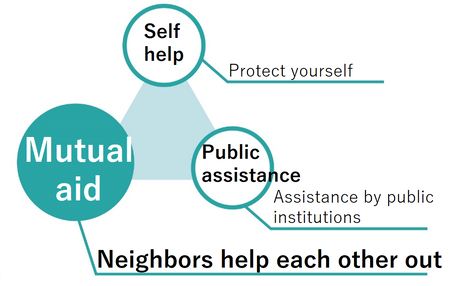

In the Great Hanshin Earthquake of 1995, about 80% of people trapped under collapsed houses were rescued by family members or neighbors. Immediately after a disaster, it is not always possible for rescue workers to arrive promptly. It is therefore important to build relationships of mutual aid on a regular basis so that we can cooperate and help each other out in times of need.
Mr. Kanda
Chairperson, Dai 1 Hokubu
What kind of disaster preparedness activities are neighborhood associations involved in?
In cooperation with the fire department and other organizations, neighborhood associations conduct lifesaving training and initial firefighting drills based on the assumption of a fire.
Some neighborhood associations maintain their own disaster stockpiles where they store food, drinking water, generators, and other items that would be necessary in the event of an emergency.
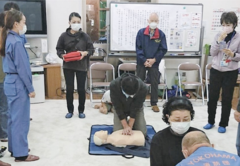
Lifesaving training

Um estoque de desastre de associação de vizinhança
Who manages evacuation sites in the event of a disaster?
Evacuation sites are operated by local residents helping each other. The cooperation of all evacuees is important for the smooth operation of evacuation sites.
[A disaster drill taking place in the community]

Setting up tents for shelters
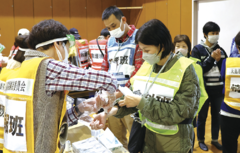
Drill for accepting evacuees during the COVID-19 pandemic
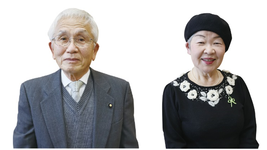
Trocar cumprimentos e manter interação social casual com vizinhos em uma base diária ajudarão a assegurar a confirmação lisa da segurança de toda gente e uma sensação de segurança no caso de uma evacuação.
Mr. Niwa
Chairperson, Honmoku / Negishi
Ms. Kojima
Chairperson, Dai 4 Nanbu
Inquiries concerning disaster preparedness: Shomu-gakari (General Affairs Section), Naka Ward Office
Tel: 045-224-8112 Fax: 045-224-8109
How can I make connections with the community?
For example, participating in community events and disaster drills conducted by neighborhood associations on a regular basis will help you get to know each other and connect with the community.
[Construindo relações cara a cara...]

It is easier for people to notice small changes, not only in times of disaster, but also when watching over children or with crime prevention.
Mr. Yoda
Chairperson, Ishikawa Uchikoshi
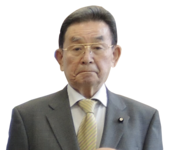
It is easier to receive a variety of information, including announcements from the community.
Mr. Hanai
Chairperson, Dai 1 Chubu
Neighborhood associations are engaged in the following kinds of activities:
Disaster preparedness
Providing a place for people to become acquainted with each other
Childcare support
Watching over the elderly
Beautification of the community
Crime prevention and traffic safety
⇒ As associações de vizinhança apoiam um ambiente vivo cômodo para todo o mundo na comunidade (japonês)!
➁ Enriquecimento de comunicação inglesa - cinco escolas secundárias juniores públicas em Naka Ward fora em prática o Yokohama sistema redondo de língua inglesa que aprende e instrução! ー
[Inquiries] Gakkō Renkei/Kodomo Tantō (Cooperação de escola e Subdivisão de Suporte de Crianças),
Naka Ward Office Tel: 045-224-8139 Fax: 045-224-8159
Ouviu de «Yokohama o Sistema Redondo» do inglês docente? Em Naka Ward, a Escola secundária de Yokohama Yoshida Jr introduziu este método educativo em 2016, seguido da Escola secundária de Honmoku Jr, e desde 2022, as cinco escolas secundárias juniores públicas em Naka Ward estendem-no, com cada escola inventando o seu próprio método de aprendizagem inglês.
In this issue, we will introduce English learning at public junior high schools in Naka Ward, where there are many non-Japanese residents and people with ties to foreign countries.
The Yokohama Round System is a method of learning and teaching which adopts the 5 Round System with additional features.
Qual é «5 Sistema Redondo»?
In one year of English classes, students study one textbook five times, repeating it in different sections. Through repetition, they aim to improve their overall English proficiency.

Round 1 Listening
Students listen to the audio to understand the outline of the story.
Round 2 Matching sounds and letters
Students identify the letters in the textbook while listening to the audio.
Round 3 Reading aloud
Students practice reading aloud over and over again.
Round 4 Reading aloud with blanks in the text
Students read aloud using a worksheet with blanks for verbs and other words in the text.
Round 5 Retelling
Students explain the content of the textbook using their own words.
What are the additional features?
Based on the 5 Round System, teachers set the number of rounds and tweak and improve lesson designs according to the actual conditions of each school.
Examples of specific measures
- Measures to encourage students to communicate with each other in English
- Measures to stimulate communication between teachers and students, and among students (pair and group work, etc.)
- Measures to encourage students to think and learn on their own
- Measures to make use of ICT equipment, such as by providing one terminal for each student, etc.

Additional features adopted at Yokohama Yoshida Junior High School
Focus on clarity. Conversation activities in pairs every hour.
The first half of the class is divided into two halves: in the first half, students engage in small talks about familiar topics in English, and in the second half, they work on the 5 Round System.
In the small talks, students are encouraged to use English to express what they want to say, and we focus on topics that interest them, such as topics from the textbooks and familiar topics such as school events. Usamos histórias sobre o Ano Novo na China, as Filipinas e outros países para estimular estudantes a não só inglês de produção, mas também ficar interessados na cultura atrás de vidas dos seus amigos.
Emi Himaki
Teacher, Yokohama Yoshida Junior High School
We asked members of Yokohama Yoshida Junior High School what they think about the system

Making English the common language of the school
About half of the students at Yokohama Yoshida Junior High School are of non-Japanese nationality or have connections to foreign countries, and about half of these students require Japanese language instruction. Therefore, building friendly relationships among students has been a challenge for the school. Accordingly, we decided to make English classes a place for communication, and began teaching using this instructional method. We have seen steady results through changes in the language spoken by the students, their responses in class, and the rate at which they have passed the EIKEN test.
Tsukasa Yonemori
Principal, Yokohama Yoshida Junior High School

I want to be able to communicate in English and get involved in solving environmental problems (SDGs)!
I think I have acquired great communication skills because we read textbooks in pairs and engage in a lot of conversation. Conversations I had using gestures, etc. with friends who are non-Japanese nationals or have connections to foreign countries turned into conversations in English, and I gradually became able to convey what I wanted to say.
Rimi Komatsu
Yokohama Yoshida Junior High School

Talking with friends during break time
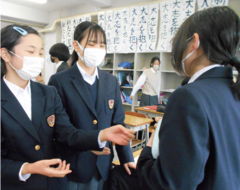
English class in progress
③ Multicultural Coexistence Column: A Little Helping Hand
[Inquiries] Kikaku Chōsei-gakari (Planejamento e seção de ajuste),
Naka Ward Office Tel: 045-224-8127 Fax: 045-224-8214
Disaster preparedness for pets
In addition to pet owners being prepared for disasters, it is also necessary for people in the community to understand what to do when evacuating with their pets.

Mr. Yoshida (Japanese)
I heard that in Sweden, you can ride buses and trains without putting your pet dog in a cage.

Anna (Swedish)
Yes. Many owners attend dog training classes and learn how to train their dogs.
The dogs know how to behave and understand their surroundings, so it is safe to ride with them.

Ms. Yamashita, a neighbor (who likes to take care of people)
Training will be very useful even in times of disaster.

How can pet owners prepare for disasters in Japan?

In principle, pets must be kept in cages at evacuation sites in Yokohama City. Guidelines for pet countermeasures in times of disaster and leaflets in foreign languages for pet owners are available for reference.
It would be great if everyone, pet owners and non-pet owners alike, can evacuate with peace of mind.
⇒ Measures for pets in times of disaster(Japanese) (Animal Protection Center)
⇒ Medidas de animais em tempos de desastre em cobertas de evacuação (Kankyō Eisei-gakari (japonês) (Seção de Saneamento Ambiental), Escritório de Naka Ward)
Carteira de identidade de página: 308-800-542












